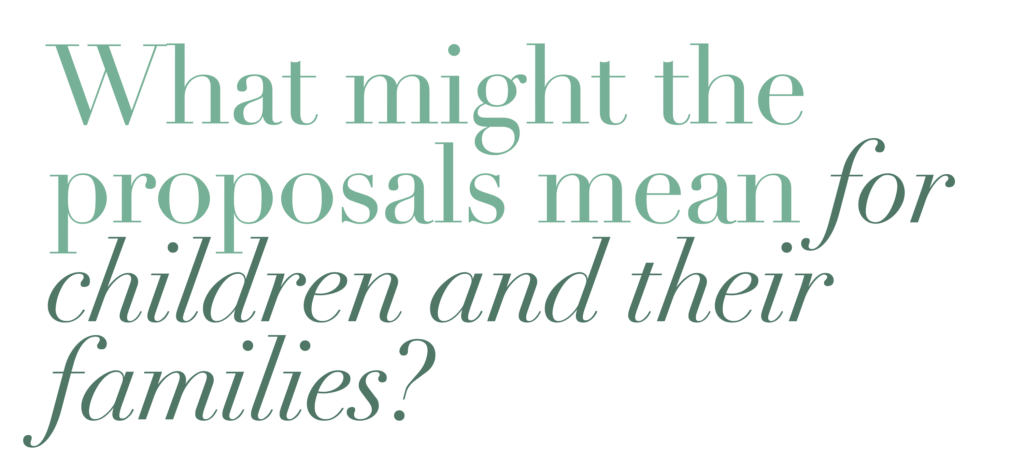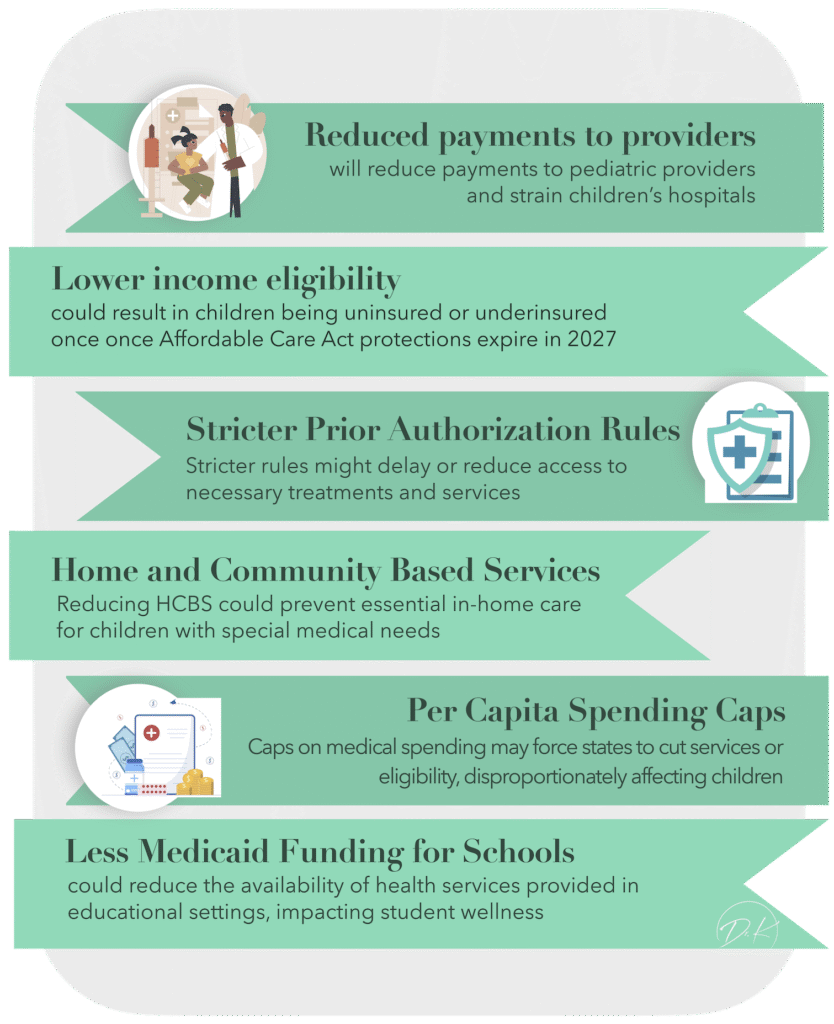As part of the 2026 budget proposal, Congress is considering substantial cuts to Medicaid funding. This could place states in a tough position, forcing them to eliminate services that are not federally mandated to save money. While not directly targeted at children, these proposals could put children’s coverage and their well-being at risk.
Medicaid covers:
-
42% of all children nationwide.
-
77% of children living in poverty in the U.S.
-
44% of children and youth with special health care needs nationwide.
While most children are generally healthy, those with complex health care needs represent some of Medicaid’s costliest beneficiaries, especially when they need extensive care to remain at home.

Over the past decades, Medicaid expansion has provided states with valuable tools to cover children. While they have significantly benefited from these efforts, they now risk being among the most affected by the proposed cuts.

Medicaid covers children through three main optional categories:
-
Children from low-income families (with income thresholds set by each state)
-
Children with severe disabilities who do not receive Supplemental Security Income (SSI) but are at risk of institutionalization and whose families face high medical expenses for their care.
-
Children in foster care or whose families receive support services to help keep them at home, but whose incomes are too high to qualify under Medicaid’s mandatory child welfare eligibility rules.
However, coverage under these categories is optional. States could choose to reduce or eliminate these groups to cut costs.
Children could also lose coverage indirectly. Research shows that when parents lose coverage, their children often do too, even if the children remain eligible. This could happen if states implement mandatory work requirements, tying Medicaid eligibility for adults to employment or participation in approved activities for a certain number of hours each week.


The proposed changes in Medicaid could impact children in many ways:
-
Reduced payments to providers may limit access to care, especially pediatric specialists, and put a heavy strain on children’s hospitals.
-
Lower income eligibility could result in more children being uninsured or underinsured once the Affordable Care Act (ACA) protections expire in 2027.
-
Cuts to home- and community-based services (HCBS) could prevent children with complex medical needs from receiving essential in-home care.
-
Stricter prior authorization rules might delay or reduce access to necessary treatments and services.
-
Per capita spending caps may force states to cut services or eligibility, disproportionately affecting children with complex health care needs.
-
Less Medicaid funding for schools could reduce the availability of health services provided in educational settings, impacting students with disabilities and student wellness.

Medicaid provides millions of children with essential health services that support their well-being. The proposed cuts could result in hundreds of children losing coverage and reduced access to critical pediatric services. Now it’s time to speak up, let your representatives know that children’s health care must not be collateral damage in budget negotiations. Advocate for Medicaid protections that safeguard children’s access to the care they need.
- Subscribe to this newsletter for clear, fact-based updates on the political decisions shaping our health.
- Share this article with your network to raise awareness about what’s at stake.